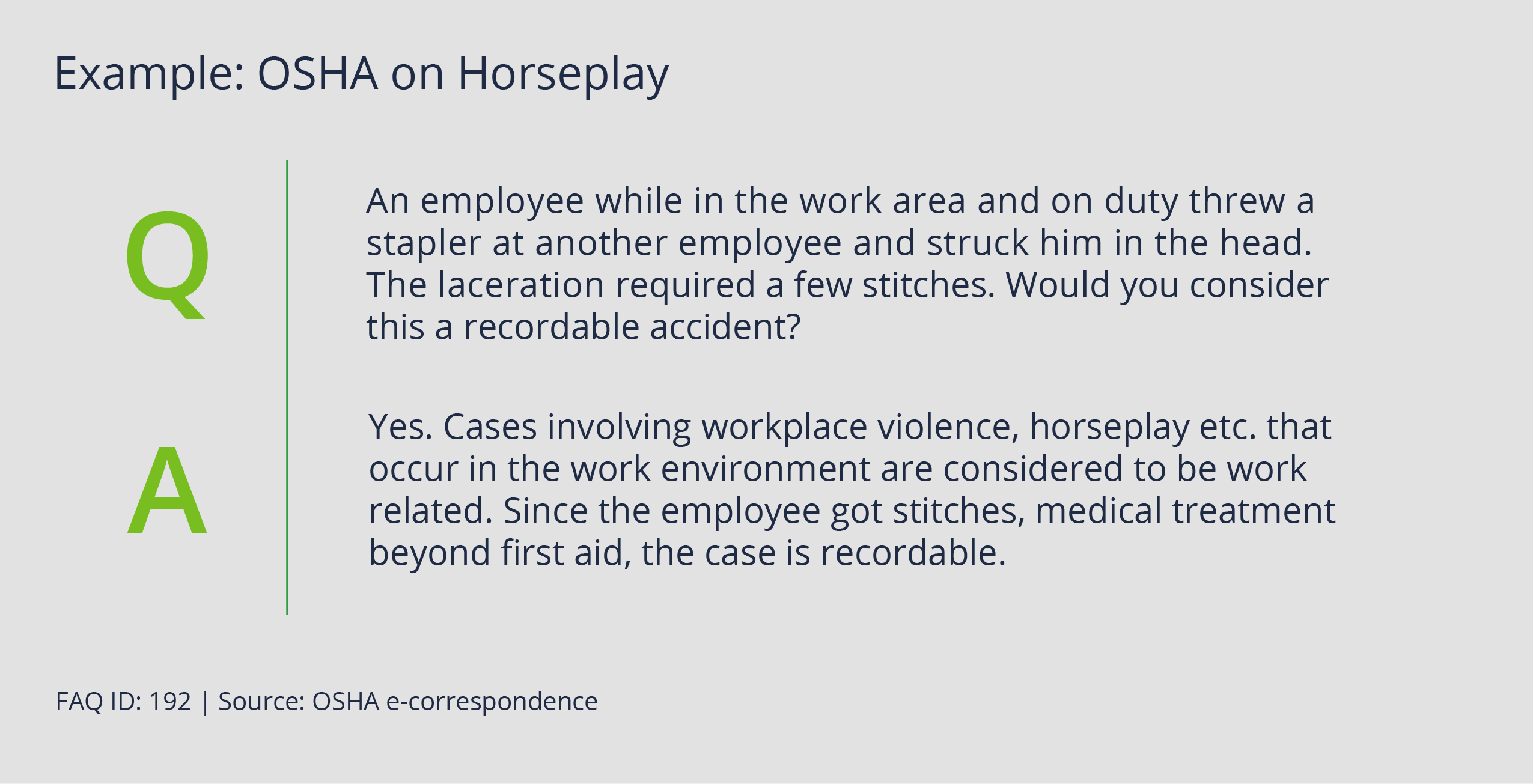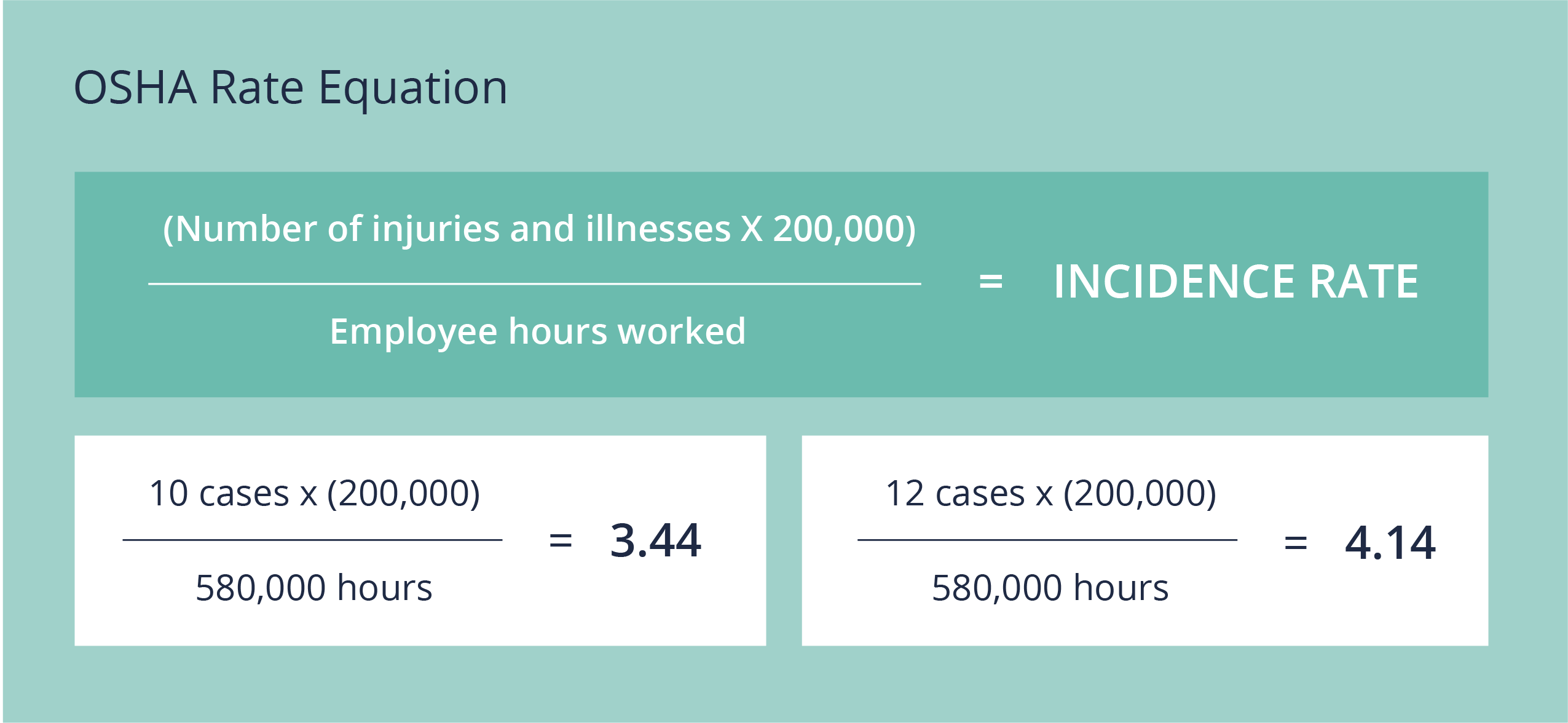Blog
Should Denied Workers' Comp Claims be Removed from the OSHA 300 Log?
When an employee is injured on the job, employers want to complete all the necessary reporting and recording as accurately as possible. To that end a question I am frequently asked is, “Should all denied WC claims be removed from the OSHA 300 log?” This article will explain why the answer is “no.”

Although the information on an OSHA 300 log and a workers’ compensation (WC) loss run does overlap, these records are part of two very different systems used for distinct purposes.
Background on OSHA 300 Logs and Workers' Compensation Claim Reports
The OSHA 300 log was developed as a standardized tool for employers and OSHA to keep track of work-related injuries and illnesses. The 300 log allows both visiting OSHA duty officers and employers to monitor the performance of their workplace safety programs and is the basis for an injury rate comparison against industry peers or near peers.
Additionally, the Bureau of Labor Statistics gathers OSHA 300 log data to populate a data base of national injury and illness rate statistics and set incidence benchmarks to help with health and safety research and OSHA enforcement activities.
| On the other hand, workers' compensation loss run systems are administrative systems which track payments, reserves, status, and various other factors related to workers compensation claims. Each state developed its own WC system and the basis for acceptance or denial of a WC claim decades before the Occupational Safety and Health Act of 1970, which mandated the use of the OSHA log in many workplaces. |
|---|
Two Different systems for Two Different Purposes
Given these different purposes, employers should not think of the OSHA 300 log as a duplication of a WC claims report. A review of OSHA recordkeeping requirements and WC laws reveals there can be OSHA recordable cases that are not WC claims, and there can be WC claims that are not OSHA recordable cases.
OSHA log recordability and WC claim compensability are both determined from facts surrounding an injury, but they are independent decisions based on two different regulation sets. Even when a case is denied by the WC carrier, it may need to remain on the OSHA log.
However, a WC denial should prompt a review of the case to see whether it is genuinely recordable. The two determinations—compensability and recordability—are made based on the following parameters:
- WC compensability is determined based on the state workers’ compensation statute for the state in which the injury occurs.
- OSHA log recordability is determined based on 29 CFR 1904. While some states have their own OSHA program, they all tend to follow the federal OSHA recordkeeping standard.

The result would be that a WC claim filed secondary to injuries sustained while roughhousing at work would be denied. However, a close look at the table of exceptions of 1904(b)(2) reveals that horseplay is not considered an exception to recordability for the OSHA log. Therefore, this case would remain on the log even after being denied by the WC carrier.
It’s interesting to note that this question has been asked of OSHA enough times that they have included it in their recordkeeping page’s Q&A tool. You can type in “horseplay” and read the answers that pop up.

Another example of compensability and recordability differing is found in the case of an employee receiving what OSHA defines as first aid (see 1904.7(b)(5)(ii)) from a physician. The physician will generate a bill that will be paid by the carrier. Even though the case is compensable, the first aid treatment alone does not make the case OSHA recordable. For instance, if a board-certified neurosurgeon applies butterfly closures on an employee’s scalp wound and does nothing else, the case is considered first aid and not recordable. The fact that a specialist applied the butterfly closures makes no difference.
Why Employers Need to Keep Accurate OSHA logs
If your company is partially exempt from keeping OSHA logs, you probably don’t need to put much time and effort into understanding this topic unless you are informed in writing that the BLS or OSHA will require you to keep records for the upcoming year.
However, if you are required to keep logs and, more importantly, if your company gains and loses business based on your recordable case rate, DART rate, or lost time case rate, it is essential to understand this aspect of recordkeeping.
Recording even one or two cases that should not be on the OSHA 300 log can significantly impact your rates. Avoiding artificially inflating rates can be the difference between winning or losing an RFP or bid or even having a contract canceled midterm.
Even if you do not gain and lose business based on your rates, OSHA is now dedicating more resources to programmed inspections. Programmed inspections are scheduled based on having OSHA recordable rates higher than those of businesses that OSHA considers your peers. This new focus means that companies with higher rates are more likely to have OSHA duty officers knocking on their doors for an inspection.
Get Help to Review Your OSHA Logs
Over the years, I have worked with my clients to review their OSHA logs, using the facts around each case to determine whether the case should have been recorded. It is not unusual for me to find that 15% to 20% of the cases do not belong on the OSHA log. In most of these situations, the reason has to do with the differences between compensability and recordability determinations I outlined above.
To further illustrate the effect that just two cases can have on OSHA rates, consider the calculations below for a fictitious food manufacturing establishment. The average recordable case rate for food manufacturers under NAICS 311 is 4.0. By recording two additional cases that should not be on the OSHA logs, this business pushed its recordable case rate over the average for the industry.

Recordkeeping can be confusing at times, especially with the differences between WC and OSHA requirements. The OSHA website is a helpful resource. If you have further questions about whether an injury or illness is recordable on an OSHA 300 log, please reach out to your Woodruff Sawyer service team for assistance.
Read our latest property and casualty looking ahead guide where we forecast upcoming trends, including workers' compensation considerations, the impact of the pandemic, accelerating climate changes, and litigation trends.
Author
Table of Contents













